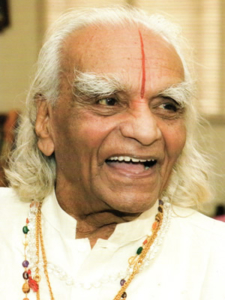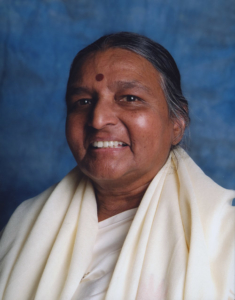 What is Iyengar’s Legacy and What Will be Yours?
What is Iyengar’s Legacy and What Will be Yours?
September 6th will be the 30th anniversary of my dad’s passing. Taken by a sudden heart attack while talking on the phone, his death was a huge shock. He was not old—63—and very athletic, vital and energetic. Here one moment, gone the next.
About a year after his passing, my sisters and mother and I got together for a few days. I clearly recall sitting in my younger sister’s apartment one afternoon, all of us ranting about politics. Reagan had just been reelected, and none of us was happy about it. As the conversation intensified a sudden knowing entered my mind: Our dad is not gone. He’s right here in all of us.
My dad did love to rant about politics, and before his passing Reagan’s imminent reelection was a huge thorn in his side. In fact, my last conversation with him included Reagan rants.
Of course there was more to my parents’ legacy than political rants. My parents left family and friends many gifts: a love of music, art and cats; an affinity for walking; a healthy skepticism of authority; a DIY attitude; a slavish commitment to being responsible and punctual. I could go on. My sisters and I have all, in turn, shared these qualities with the people we encounter.
The point I got from this that has never left me is that when we die, a part—maybe the most important part—of us lives on in our families, friends, colleagues, enemies and sometimes in people we don’t even know. The parts of us that express who we are as unique beings leave a residue that stays long after our bodies are gone. I’m pretty sure that we can never know the complete magnitude of our impact.
What Lives On?
B.K.S. Iyengar’s passing has inspired a lot of commentary. As much as Iyengar must have recognized the magnitude of his reach, it was probably greater still than he could have known.
His daughter, Geeta, wrote this short dedication following his death: “Only his body has ended. One person’s efforts from inside out, changed the acceptance of yoga throughout the world. Nothing was hidden, from the time he began to practice, to his illness and death. Even last night he was telling Abhijata, ‘I have shown you all these things, now realize them for yourself.’ What he has given cannot be encompassed by words. If a disciple is more developed, then that person will understand. What can be said in words, is that he was precious to us.”

Geeta Iyengar
There’s actually quite a lot to unpack in Geeta’s statement. But the part that has resonates most for me at this time is that only his body has ended. His teachings live on. His influence is inextricably woven into Western yoga: attention to alignment, therapeutic application of Hatha Yoga, the props he invented to allow anyone to reap the benefits of almost any asana, his fierce demeanor and even fiercer dedication to practice and discovery. As with our ancestors, the most important aspects of B.K.S. Iyengar will live forever in the heirs to his yogic innovations.
I got to experience a three-week intensive with Iyengar in Pune in 1989. Practicing in India, the birthplace of Yoga, was rich beyond what I could have imagined. I had studied with many competent, insightful Iyengar-style teachers in the U.S. before traveling to Pune, but somehow being in India changed everything. The experience of weaving through Pune’s crowded, chaotic and colorful streets on my daily walk to the Institute dug deep, ancient, yogic roots into my soul.
I was constantly humbled by the classes in the intensive. I felt that if three weeks of practice in Pune left me with even a tiny understanding of Tadasana, I would have learned enough for a lifetime of practice.
Before I left for India I heard from pretty much all the other Pune veterans I knew that Iyengar would make me cry at some point. He was, of course, legendary for yelling, kicking, slapping and often tearing down his students. It was cultural, my friends said, don’t take it personally. It’s for your own good, they said. This was a part of the journey I was not looking forward to. I don’t respond well to harsh inspiration. I steeled myself for the onslaught.
My experience with Iyengar could not have been more different from my expectations. Mr. Iyengar was kind to me. With the exception of one slap on the knee, during which he smiled and said, “Wake up your knee,” he was gentle and even jocular with me. In the six months previous to traveling to Pune, I’d gone through a difficult separation. By the time I met Iyengar, I felt emotionally battered. I believe that he sensed this, and understood that yelling, slapping and kicking were not going to be helpful.
I did see him yelling and making an example of others though, and it made me flinch more than once. It is an unfortunate part of his legacy, in my opinion, that some of his teachers felt compelled to take on his stern and often angry demeanor. The few times I took workshops with these intense, though competent, teachers, I felt my practice shrink. I chose to work instead with teachers who inspired me to expand.
Iyengar’s most famous legacy was his attention to alignment. Before he coined phrases such as “four corners of the feet” and “big toe mound” asana practice was much less disciplined. Pre-Iyengar practice was less precise, and probably in some ways, less effective. His focus on alignment was meant to unify the body for the sake of body-mind integration. When continuity reigns, prana flows. When prana flows, the mind becomes alert and calm. Then pratyahara, dharana and dhyana arise naturally.
Still, one particular instruction—aligning your pelvis in standing poses so that they are between two imaginary plates of glass—caused long-term damage to my hip and SI joints. Though I abandoned that instruction years ago, the physical residue lives on in my cranky joints. The mental/emotional residue resides in my regrets for having repeated that instruction early in my teaching career.
One thing I admired about Iyengar was his endless curiosity, and his willingness to abandon long-held alignment principles when he discovered something new. I heard this countless times in studying with senior teachers over the years. “Iyengar’s not giving that instruction anymore. Try this.” I appreciate this. He was clearly a master, and yet, he did not carve his alignment instructions in stone. He was known to be adamant about his alignment points when they were current, but he was always willing to let them go in favor of something he felt worked better.
What Will Your Legacy Be?
Iyengar’s legacy for me is this: When you are practicing, just practice. Devote your heart and soul. Be fierce, not toward your students (check out Matthew Remski’s brilliant blog about how teachers can model what not to do), but in your commitment to practice. Practice with integrity. Don’t chain yourself to your ideas. Be attentive to what and who’s in front of you. And I will never forget the kindness and gentleness he extended me at a time when I really needed it.
Each of us is constantly giving something to the world around us. When our bodies no longer walk this earth, we will still live on in the hearts and minds of those who follow. What do we want our legacies to be?

Thank you for your reflections on the impact those of importance in your life passing. It was lovely, humbling and inspirational.
Thank you for your comment. It’s humbling to me to think about the legacies we all leave just in living our lives.
Your article is very Moving, i will never have the luck to practice with Iyengar Ji but I hope to go soon to Pune to practice anyway! I worked with senior teachers that are harsh but I had the luck of practicing with Glenn Ceresoli..he s the one that inspired me to be a yoga teacher and for me he s one of Iyengar legacies..I will keep what you wrote in my heart!!thank you!
Thank you for a very thoughtful perspective on Iyengar and what we leave behind in our lives. You are, as Florida Scott-Maxwell advocated, “fierce with reality.”